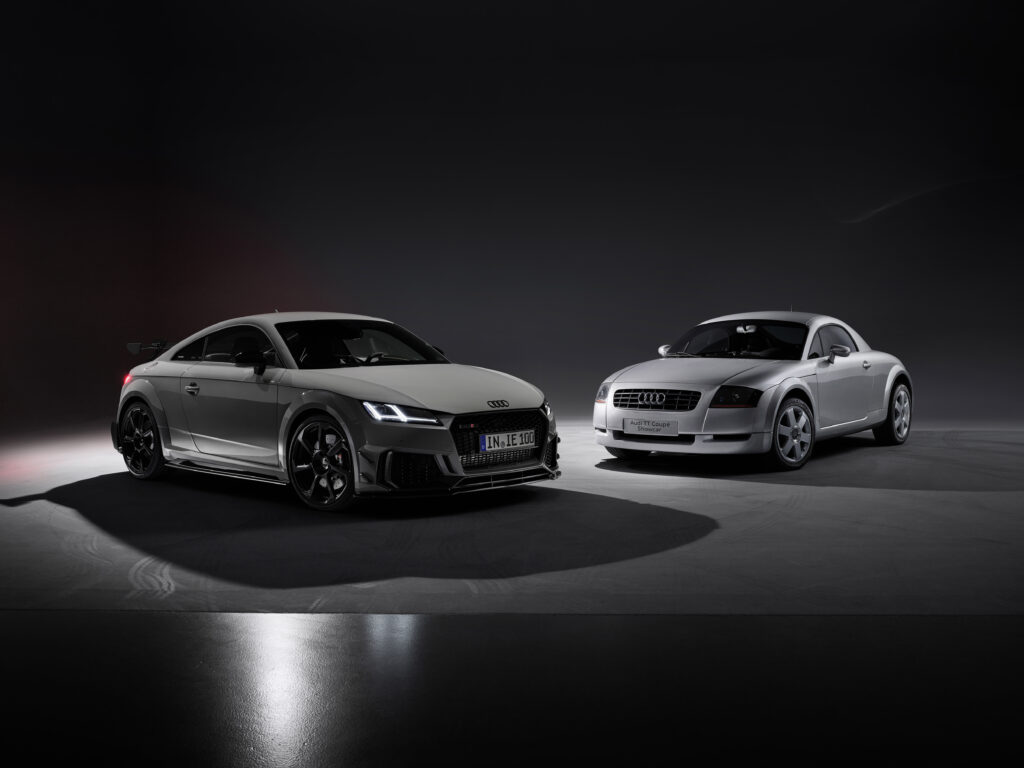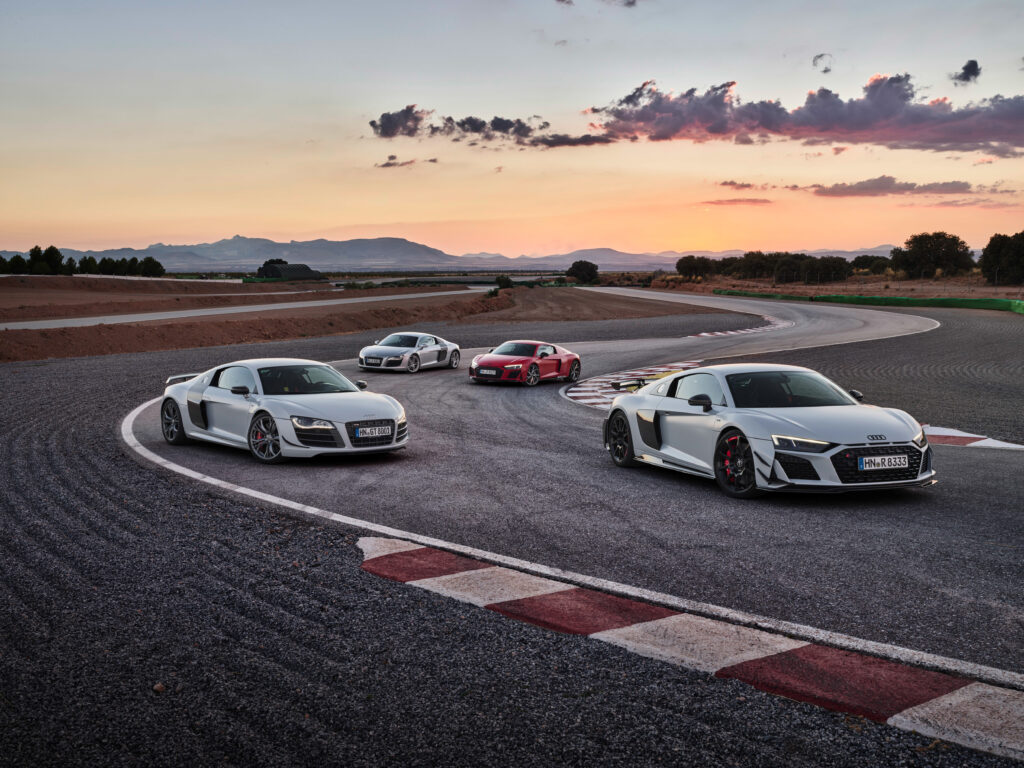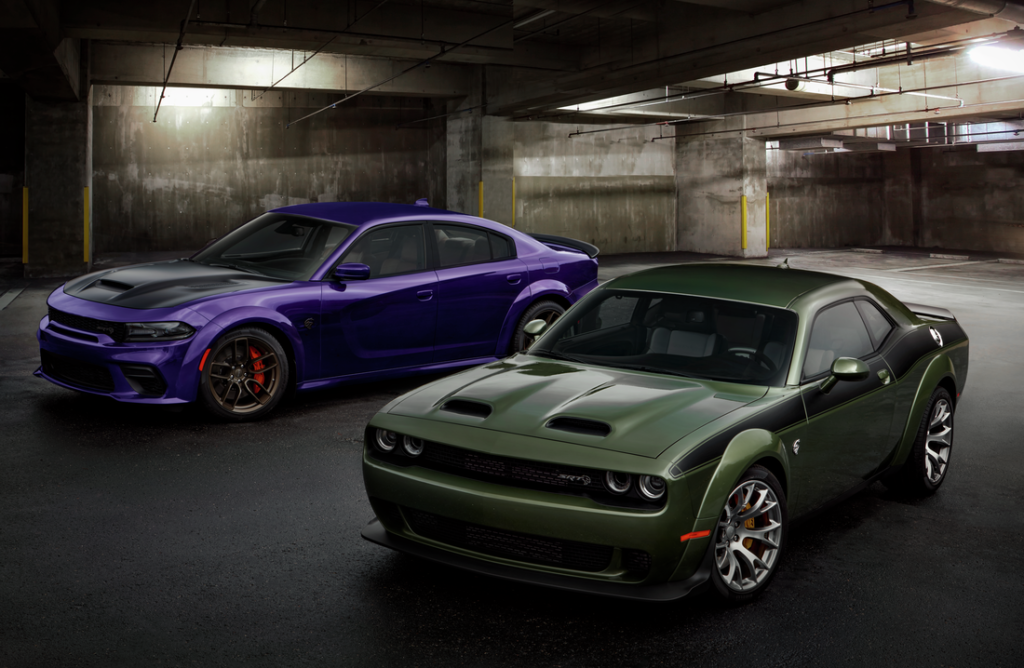
As we are slowly and gradually moving towards hybridisation and electrification, we are also leaving behind the golden era of internal combustion engine cars, and like it or not, we are going to lose them in the coming future until a cleaner alternative to the gasoline come up, like synthetic fuel and save our petrolhead wet dreams without polluting the environment and yeah, in Chile, Argentina, Porsche is developing synthetic fuel with HIF, but still it is in its developing stages currently, so we can expect it to be fully accessible by 2030 or 2035, more on that later because now here we are discussing 5 ICE performance cars, that will be replaced by their alternatives or some we won’t see in 2024.

Audi TT
The Audi TT served the industry for 25 years, and its story began back in 1998 when the MK1 TT came out, as its design was a bit feminine to some people, so they use to call it the ‘hairdresser’s car’, but underneath it was a perfect little German all-wheel-drive sports car, but later when the MK2 came out in 2006, the design got a bit muscular, and it got smoother yet aggressive wheel arches, which gave the TT more modern and macho look, and since the MK2 we got Audi’s 2.5L 5-cylinder with the introduction of the TT RS after the MK2 came TT’s largest selling generation MK3 TT in 2014, which got a proper mini R8 look because it got the sharper front end, rectangular headlamps with angrier looking DRLs and the 2.0L TSI engine in a small body gave it the perfect balance of weight and power, and all these 3 generations of TT have left their mark in the history of automobiles, but Audi will finally put the cap on the TT in 2024, and this is the final year of the TT because Audi has unveiled the final TT RS Iconic Edition limited till only 100 units, which end the 25 years of legacy of the TT.

Audi R8
If anybody asks me about, what’s that one car that I keep with me and drive daily for my entire lifetime, my answer will always be the Audi R8 because back in 2007, when for some people, the Ferrari and the Lamborghini were too much expensive and also weren’t reliable to drive them daily, so at that time Audi gave us the R8, a supercar which was sexy yet was low maintenance than the Italians and can be driven daily, and some petrolheads still call it the spiritual successor to the Honda NSX. At first, when Audi launched it at a low price as compared to the Italians, it was fitted with a 4.2L naturally aspirated V8 and was able to put out only 414hp, which was lower than the 500+ horsepower mark of the Italians, but that didn’t mean it wasn’t fun-to-drive, with the 4.2 V8 Audi gave the option of a 7-speed DCT or a 6-speed manual transmission with Quattro all-wheel-drive, though DCT was a good gearbox, and that we got in the Inida spec R8 as well, but the manual made it more engaging to drive and sadly it didn’t come to India. Then later in 2010, Audi ditched the 4.2 V8 and launched it with a big 5.2L naturally aspirated V10, by which the power went up by 100hp, which made it more powerful and the V10 sounded like the scream of an angry panther, then in 2015 came the Type 4S, the 2nd and the last generation of the R8, powered with the same 5.2L V10 but only with a 7-speed DCT and was also available with RWD too, the power went up by 100hp more in the top V10 Performance version, but this year is R8s last year of production because Audi has announced the end of the R8 by unveiling the most hardcore R8 till date the R8 RWD GT, limited to only 333 units, means from 2024 you will not see any R8 from Audi.

Dodge Challenger and Charger
The Challenger and the Charger is one of the most iconic muscle car duos that Dodge gave us decades ago. And since then, this duo has smoked every tarmac with their rear tyres and has ruled every drag strip, and when this duo got Hellcat added to their names, they changed the muscle car game. But this year, the legacy of over 6 decades is coming to an end because the year 2023 is the final year for the Charger and the Challenger lineup because Dodge announced their plans towards electrification by revealing the Charger Daytona SRT Concept last year, which was the electric version of the Charger as a concept. But this year, Dodge also revealed the final and the most powerful ICE Challenger, called the Challenger SRT Demon 170, as a farewell to the Challenger and the Supercharged Hemi V8, which holds the record of the fastest quarter-mile achieved by a production car of 8.91 seconds and Dodge will only produce 3,300 units of the Demon 170, which means we will see electric muscle cars from Dodge in the future.

McLaren 720S
The McLaren 720S is one of the finest supercars that the world has ever seen because the beautifully sculpted aerodynamic design serves the aero purpose but also makes it a most beautiful supercar to look at. The 4.0L twin-turbo V8 with 710hp and 770Nm of torque give it the perfect push to reach from 0-100kn under 2.9 seconds and the Proactive Chassis Control II suspension system helps it to chuck it around the corners and to give the driver a perfect driving engagement and if you want more power from the same block but with hardcore track updates, the 765 LT does the job perfectly, but also being a limited production variant, the 765 LT is not accessible to more people. So to solve the problem, recently McLaren has revealed a powerful replacement for the 720S, called the 750S, which packs the same twin-turbo V8 but pumps out 30 more horses and 30Nm more torque than the 720S, and which also perfectly fill the gap between the 720S and the 765LT. So it means this is the last year for the 720S, and it will also be the last year for the 765LT, and McLaren will only produce the 750S by early 2024.

Ferrari Portofino
The Ferrari Portofino came in 2017 as a replacement for the Ferrari California and powered the Portofino was Ferrari’s 3.8L twin-turbo V8 which pumped out 591hp and 760Nm of peak torque, which helped it to reach from 0-100km in 3.6 seconds. Then in 2020, the Portofino was replaced by the Portofino M, which is currently in its final production year. The Portofino M is designed to be the most powerful version of the Portofino, and that’s why it generated 20 more horses than the standard Portofino. But since Ferrari launched the Roma, they needed to put a cap on the Portofino M. And with the introduction of the Roma Spider, Ferrari had decided that the Roma lineup become the entry-level lineup of Ferrari from 2024.








